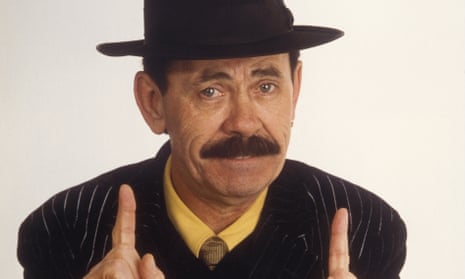There is a joyous moment halfway through R&B singer Serpentwithfeet’s latest single, Same Size Shoe. In a tender falsetto, he calls for his “trumpet” before unleashing a series of rhythmic vowel sounds: a fanfaring instrumental solo with only his own voice over a minimal backing. To those unfamiliar with the phenomenon, this is scat singing. And to hear it amid a loved-up ballad in 2021 begs the question: is scatting back?
Loosely defined as vocal improvisations with a wordless melody, scatting is a term perhaps most readily associated with cartoonish imaginings of zoot-suited men snapping their fingers in smoky jazz bars. While it might seem like a lost musical artform, it has always existed in popular music beyond its native genre, jazz. Rapper Eazy-E channelled a horn-like scat in his 1990 track Eazy Street, while Busta Rhymes and Twista’s hyperspeed flows often veer into scatting territory. In pop, Beyoncé overlayed an electric guitar solo with a scat on 2011’s I Care, while Amy Winehouse laced 2003’s Frank with it. In R&B, scatting finds its ultimate expression in Lalah Hathaway, who has pioneered a remarkable chordal voicing of the form. Of course, there was also the vocal acrobatics of Scatman John, whose novelty track Scatman (Ski-Ba-Bop-Ba-Dop-Bop) conquered the charts in 1994. It could be argued that even the infernal ringtone-revving of the Crazy Frog owes its influence to scat singing.
Historically a cornerstone of the jazz singer’s repertoire, the earliest recorded examples are thought to be found in a scratchy 1911 portion of the ragtime singer Gene Greene’s King of the Bungaloos – a chaotic segment that veers from bouncy monosyllables to a gravelly Popeye impression – or Al Jolson’s That Haunting Melody, which gives the scat a more languorous tone.
It was not until the godfather of New Orleans jazz, Louis Armstrong, came along that scatting became a popular pursuit. His 1926 recording of the tune Heebie Jeebies saw Armstrong employ his signature baritone growl for a vocal improvisation. The song’s ensuing popularity saw scatting incorporated into Armstrong’s performances, while contemporaries such as Duke Ellington used scat sections as the core for compositions such as his Creole Love Call. Vocal powerhouses Ella Fitzgerald and Sarah Vaughan transitioned from verse to scat solos in their songs, employing their liquid vocal skill to rival their backing bands. It is a tradition that has been continued by the likes of Al Jarreau and Don’t Worry Be Happy singer Bobby McFerrin.
In fact, the scat has never really left us: it lies dormant in the “-ella’’ of Rihanna’s Umbrella, in Jessie J’s chaotic, meme-ready vocal freestyles, and in the nightmarish refrain of Baby Shark. Ultimately, when you have the voice, who needs words and instruments anyway?

Comments (…)
Sign in or create your Guardian account to join the discussion